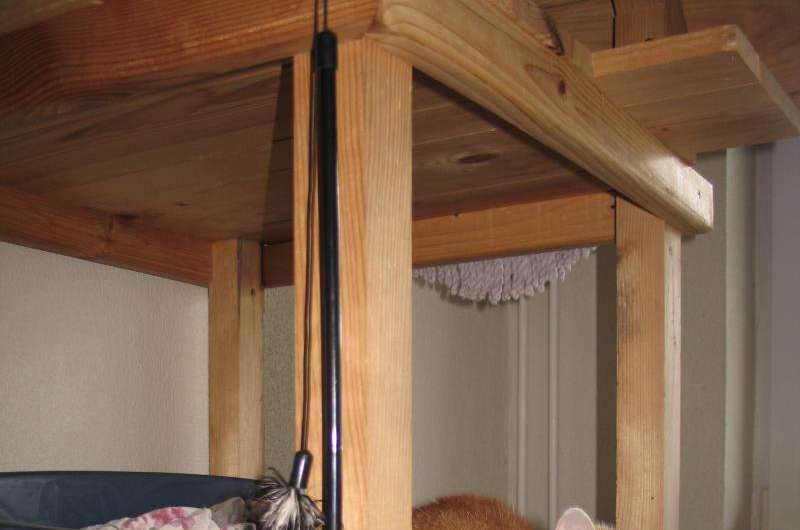Physical condition of shelter cats an indicator of housing conditions

When animals lose their home, they often end up in a shelter. In order to assess the welfare of shelter animals, researchers from the Vetmeduni Vienna spent one year looking at the physical condition of cats at 30 animal shelters in Austria. The results: A poor coat condition indicates a longer length of stay, and very thin cats often have little space for resting or lying down. The study was published in the Journal of Veterinary Behavior.
Although pets enjoy a very high status in our society, for various reasons animals are sometimes left with a shelter. The shelter provides a temporary home for the animals where they can be properly cared for. The priority, however, is to find a new owner.
Christine Arhant of the Institute for Animal Husbandry and Animal Welfare at the Vetmeduni Vienna was interested in finding out whether the physical condition of cats at animal shelters can function as an indicator of housing conditions.
Together with a group of colleagues, she spent one year looking at the physical condition of over 720 cats and correlated the data with the found housing conditions. For her study, Arhant visited 30 separate animal shelters with an average of 67 cats per shelter.
Poor condition an indicator of insufficient room furnishings
Very thin cats correlated with a relatively low number of resting areas and few places to hide. A resting area is defined as a place where the animals are offered protection from the cold floor by, for example, a blanket or a basket. Ideally, the cats should have a soft resting place. "Cats that have too few resting and hiding places experience stress. This leads to physical responses such as a lower appetite and reduced cleaning behaviour," first author Arhant explains.
Poor coat condition a sign of longer shelter stays
Cats with shaggy coats were found in shelters that kept larger groups of animals together, provided fewer cat toilets on average, and had a subjectively stronger smell. More cats with shaggier fur were also found in shelters where the average length of stay was relatively long with 1.5 to 2 years. A poor coat condition might also have a negative impact on chances of adoption.
"Our results show that it is possible to establish certain housing conditions by looking directly at the animal. Each animal can tell its own story of how it is coping with its current living conditions. In the future, such animal-based parameters could help to assess the quality of a shelter. This definitely is of benefit for the cats," says Arhant.
Previous study with dogs shows: Human contact is most important
In a similar study published by Arhant in 2014, she looked at the housing conditions of dogs at animal shelters. The study showed the importance of human contact for the animals and that, ideally, the caregiver should have a positive attitude toward dogs. The study was able to measure this effect.
More information: Christine Arhant et al. Assessment of behavior and physical condition of shelter cats as animal-based indicators of welfare, Journal of Veterinary Behavior: Clinical Applications and Research (2015). DOI: 10.1016/j.jveb.2015.03.006
Provided by University of Veterinary Medicine—Vienna





















